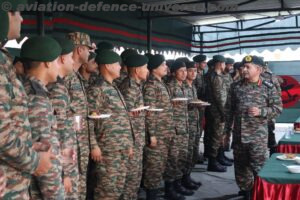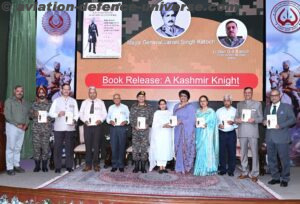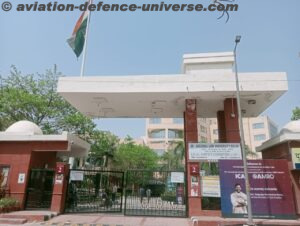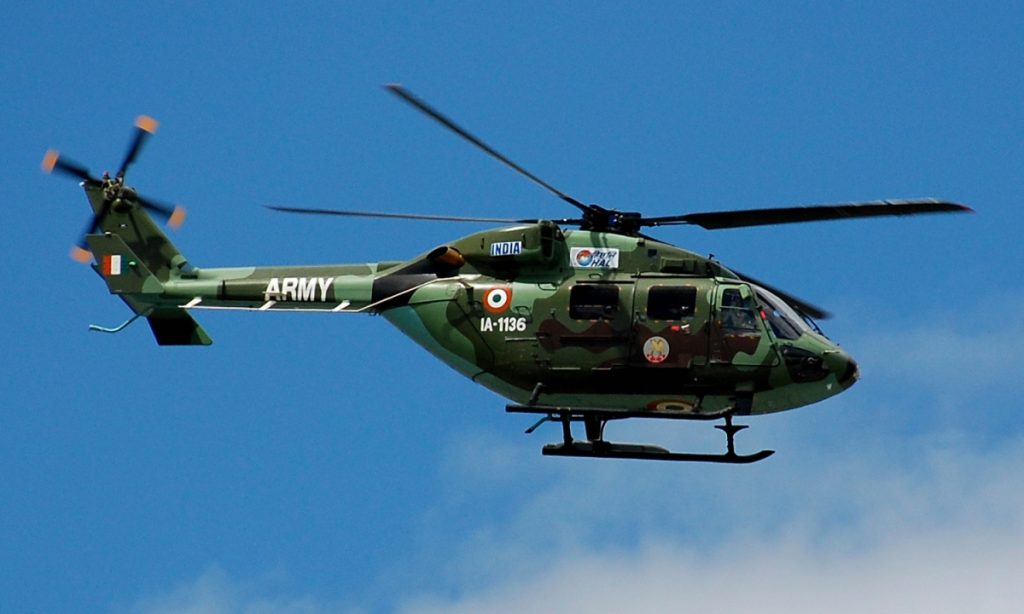
By Lt General Balli Pawar (Retd.)
New Delhi. 01 November 2021. Last year the Armed Forces raised the alarm (SOS) to the Ministry of Defence (MoD) of the fast emerging critical operational void in the virtually obsolete Cheetah and Chetak class of helicopters due to their reaching the end of their ‘Total Technical Life’ by the end of the year 2022 and the urgent need to fast-track their replacement – France the country of original equipment manufacturer of Aloutte-II&III (Cheetah &Chetak in India) has already displayed these helicopters in Museums. Unfortunately the Army Aviation is the largest operator of this class of helicopters and continues to fly this outdated, vintage and accident prone fleet which keeps falling out of the skies on a regular basis, exacting a heavy toll in terms of men and material thereby earning the now famous TAG of Flying Coffins along with the Mig-21 fighter aircraft.
The latest in this sordid and never ending saga is the fatal crash of the Cheetah helicopter in J & K on 21 Sep this year resulting in the loss of two young budding and precious lives for no fault of theirs – the blame squarely rests at the door of the MoD. Exactly a year back a now chillingly similar and familiar story played out when a Cheetah helicopter while on an operational training sortie in Bhutan, crashed killing both the pilots – one was from the Royal Bhutan Army. The sustainability and maintainability of this aging fleet is itself becoming well nigh impossible which is a serious issue and major cause of concern today, as it impinges on the Operational Preparedness of the Army Aviation. However, in the MoD it is business as usual, with no urgency being displayed to replace these flying coffins.
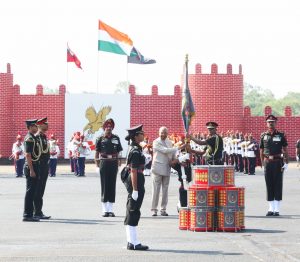
The Cheetah/Chetak helicopters represent the bulk of the fleet in the military helicopter inventory with almost 400 plus helicopters, with the Army alone operating 200 plus. The most crucial and critical factor is that only the Cheetah can operate and land at very high altitudes, on almost matchbox size helipads to speak in a literal sense – the highest helipad is Sonam at 19800 feet in the Siachen Glacier. These helicopters were inducted in the late sixties and seventies and are not only no longer fit for flying, but are plagued by a high crash rate and huge serviceability problems, resulting in loss of precious lives and equipment. This emerging operational void becomes even more significant due to the ongoing military confrontation with China in Eastern Ladakh, an area where the Cheetah helicopter is playing a critical role. Add to this the fact that the Cheetah helicopter is the lifeline of troops deployed in Siachen Glacier and the gravity of the current situation becomes crystal clear.
Cheetah/Chetak Replacement Circus
The Army and Air force need approximately 400 helicopters to replace the existing fleet of Cheetah and Chetak as well cater to operational voids. The move to replace these helicopters goes back to 2004 when the first trial was conducted but got mired in controversy due to anonymous complaints by rival vendors – this was followed by two more trials conducted over the next few years, but these too sadly met the same fate. These trials had the participation of some of the most advanced, time tested and modern helicopters from Bell and Eurocopter (now Airbus) however, surprisingly none of them reached their finality due to flawed procedures in our defence acquisition system and the decision making process – in fact the Ka-226T was also part of the last trials which were terminated prematurely in 2014.
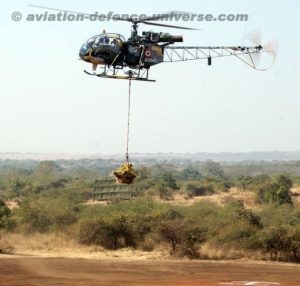
The Government’s decision to go in for the induction of 200 Russian Ka-226T helicopters in a Government to Government agreement in 2014 was therefore a welcome step, having witnessed the fate of the earlier trials. However, the progress on this crucial project also been tardy to say the least, for even six years after the agreement between the two Governments at the level of President Putin and Prime Minister Modi, the contract has still not been signed – Our bureaucratic system has stumped even the Prime Minister’s decision. HAL is the nodal agency along with Russian Helicopters for this project and as per the agreement, 60 helicopters will be delivered in a fly away condition, while the balance 140 will be manufactured in India at HALs new facility at Tumkur, Karnataka.
The contract was to be signed in 2019, but there seems to have been no progress on the same to date, highlighting India’s lethargic approach to the defence equipment acquisition process, even when it is operationally critical. As per reports the main problem relates to indigenous levels being offered by Russia which is not acceptable to India. The Ka-226T is a light multirole, twin engine, coaxial contra – rotating helicopter and has the capability to operate in hot and high conditions including the Siachen Glacier- the Army will get 135 helicopters while the Air force is slated to get the balance 65.
The other replacement project is HAL’s indigenously developed Light Utility Helicopter (LUH) which recently demonstrated its high altitude capability in Ladakh and Siachen areas. The LUH is a single engine, state of art, modern day helicopter in the 3 Ton class with a standard main and tail rotor configuration and has been developed to cater to the replacement of Cheetah/Chetak fleet of all three services along with the other project of Ka-226T. This Project was sanctioned in 2009 by the Government and was given a time line of six years for achieving the Initial Operational Clearance (IOC) for the basic version which should have been 2015 – this would have ensured timely replacement for Cheetah/Chetak and hence the HAL has not covered itself in glory either. It is therefore ironical that the Army has given it the IOC only in Feb this year and that too with a caveat to rectify two major issues still existing on the LUH keeping in mind the current critical situation. As per HAL the LUH is expected to go into production early next year at the HALs newly built helicopter complex at Tumkur, Karnataka. The plans are to manufacture 184 LUH with Army to get 123 and Air force 61 helicopters. While the Ka-226T project presently remains mired in uncertainty, the LUH production by HAL hopefully should move ahead with the earliest induction schedule by end of 2022.
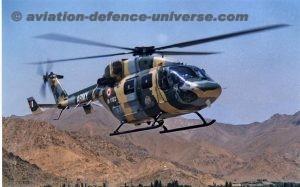
Other Critical Gaps
A major critical gap is the non availability of the full weapons package for its armed variant of the ALH called the ‘RUDRA’ which is already in service with Army and Airforce and the much touted Light Combat Helicopter (LCH) which is expected to enter service this year as per HAL claims. The LCH is a typical attack helicopter with the stated capability to operate at high altitudes. The typical weapons package approved for both the RUDRA and the LCH includes a Gatling gun, rockets, air to air missiles (French ‘MISTRAL’) and air to ground missiles ( DRDO ‘HELINA’), along with a modern sighting system and integrated electronic warfare self protection suite. However, in its present configuration both the RUDRA and LCH have not been integrated with a suitable ATGM, as the air version of Nag ATGM ’HELINA’, being developed by the Defence Research and Development Organisation (DRDO) is not yet fully ready. The HELINA Project was sanctioned in 2008 to equip the RUDRA and LCH with a state of art anti tank missile system. However, in the past 13 years it has just been able to reach the termination stage of Design & Development phase. The recent trials in Feb this year though a relative success, the system is yet to meet the minimum requirement of the Army which was set in 2008. The non availability of a suitable airborne ATGM not only greatly impacts the operational capability of the RUDRA but also the LCH project of HAL. The ATGM is the main weapon system of an armed/attack helicopter and without it the helicopter merely remains a gunship, inhibiting exploitation of its full potential. This is an area of grave concern and needs to be addressed on priority by all stake holders concerned especially the Armed Forces top hierarchy. All previous efforts to acquire a suitable ATGM ex import have come to a naught due to stone walling by DRDO giving false hopes and assurances that they have not been able to fulfil, leaving the Armed Forces high and dry. What is more shocking is that these helicopters also do not have the MISTRAL air to air missiles as their import is stuck in some bureaucratic pricing muddle for the last six years – such a situation to me looks unimaginable and beyond belief. Here the Armed Forces top brass is equally responsible for letting such a state of affairs to continue despite the current operational scenario – why are they allowing the Babu’s to dictate terms on such an important operational issue.
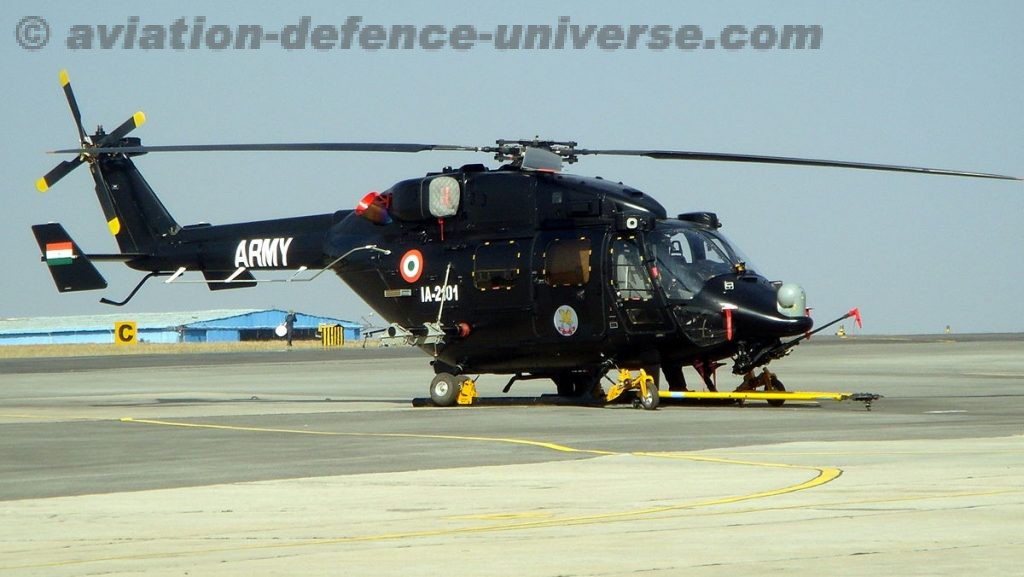
Conclusion
The replacement of the obsolete and ageing Cheetah/Chetak fleet remains the biggest challenge for the Army Aviation. The Army has raised alarms from time to time and have finally warned the Government of this critical operational void which has serious security implications. This becomes all the more relevant due to the ongoing military confrontation with China in Eastern Ladakh which is already a year old and not likely to end anytime soon. Keeping in mind the criticality of the situation the Government needs to push both the Kamov Ka-226T and the LUH projects on fast track through the HAL – the contract for the Ka-226T project needs to be signed at the earliest. The numbers required are large and HAL will need to ramp up its production capacity for these two types of helicopters, to replace of the Cheetah/Chetak fleet in the shortest possible timeframe. It can take anything from five to seven years for the complete replacement of the inventory of Army on the premise that there are no further bureaucratic delays.
The HAL already has its hands full with three important and crucial helicopter projects, namely the Ka-226T, LUH and the Light Combat Helicopter (LCH) which are likely to go into production next year, provided there are no more hitches and glitches. It also needs to be noted that HAL already has sufficient orders for the ALH and RUDRA for all three Services, which it will need to honour as per time lines given. It is time for the Government to crack the whip and take some tough decisions in this unending replacement saga or it will have to pay a heavy price for this critical operational void.
(Lt Gen BS Pawar (Retd.) is a Delhi based defence analyst, former Head of the Army Aviation Corps and Commandant School of Artillery. The views in the article are solely the author’s. He can be contacted at editor.adu@gmail.com.)







































